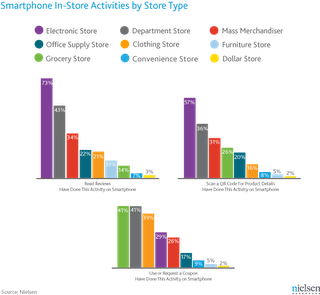
RIGHT NOW CONTENT MARKETING is the name of the game. That’s Content with a capital C, which is presently a thriving business in the ad agency domain. The idea is to influence the trends that flow through social and mobile media by inserting Content on behalf of brands.
There are many ways to accomplish this — ranging from hiring ringers to post favorable reviews and spam blog comments, to sharing genuinely valuable consumer information like product usage tips or recipes. It is also desirable to monitor Content posted by others, then respond as needed to amplify, rebut, or influence perceptions.
The motivation is, I think, largely fear-based. The social-mobile frenzy generates tons of uncontrolled consumer sharing, both pro and con, accurate and inaccurate. No doubt there are also dirty tricks being played every day by competitors bent on undermining their rivals. Brands lose sleep over losing control of their messages and so they hire hip young firms to help them create and spread content of their own.
The trick to making Content work is to put enough of it in front of the folks the brand wants to influence, especially the ones capable of influencing others — like bloggers and social media divas. The agencies are supposed to ensure that the Content is both artful and discoverable by the target audience. Hipness and coolness are good traits too.
So the goal is to create the right Content and embed it within the right Context, in order to better drive Commerce. A key attribute to making all of this work is authenticity — the perception that the Content is believable, relevant, and true (probably in that order). The new Content Marketing agencies are all over this, of course.
Today I shared a bit of content of my own on RetailWire.com as part of a discussion, Which Came First? The Content Or The Egg? It make me think about the quip about sincerity most often attributed to Groucho Marx, who is pictured here in the classic film, “Duck Soup.” (It may actually have been first uttered by French dramatist Jean Giradoux, but Groucho is funnier.)
Here’s my take:
It seems “content” is a wheel that keeps on rolling. Remember the “content is king” slogan that was popular at the peak of the dot-com frenzy? Its relevance then was the hunger for product data and other information needed to populate the new web sites. If you build it, you have to fill it with something, right?
Content was soon displaced by “commerce” as folks got the shopping cart and delivery mechanisms worked out and consumers got used to the idea of shopping remotely. After a period of more or less centralized control, the social-mobile reality has caused user-created content to explode, but in an entirely uncontrolled manner.
It is into this chaotic environment that the new content marketers are venturing. They hope their organized campaigns will somehow float above the SoMoLoMe din, resulting in a degree of influence over brand perceptions. A whole industry of B2C content marketing agencies is emerging to service this trend.
The risk is that these messages drown in a vast content sea in which the relevant mixes with the contrived. I don’t believe brands will win in this environment simply by opening the floodgates or turning up the volume.
Only quality and authenticity can win in such a content-flooded environment. To paraphrase the sage, Groucho: If you can fake that, you’ve got it made.
© Copyright 2013 James Tenser


 CONSUMER SURVEYS FROM
CONSUMER SURVEYS FROM 
